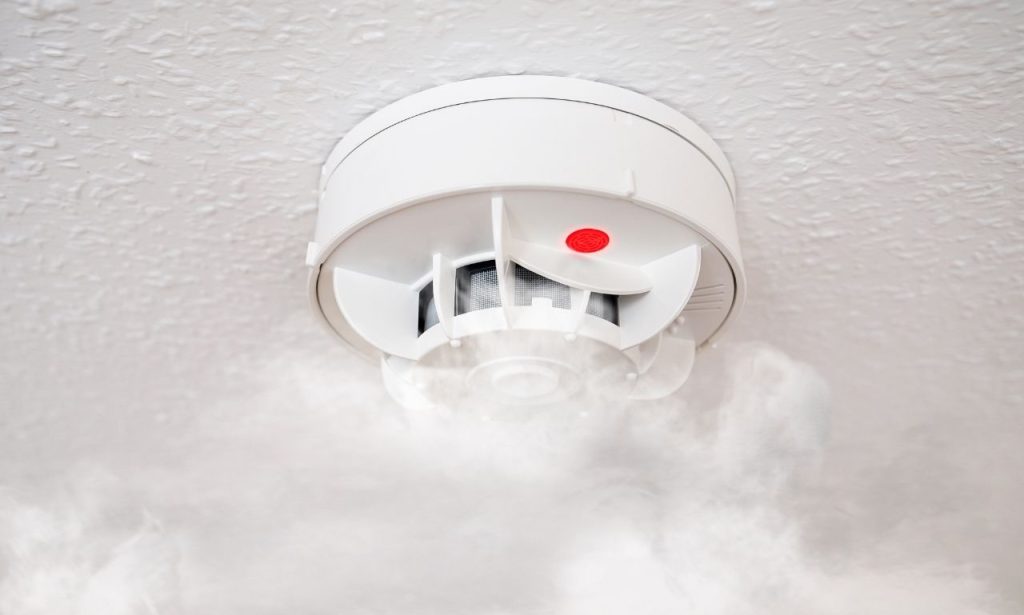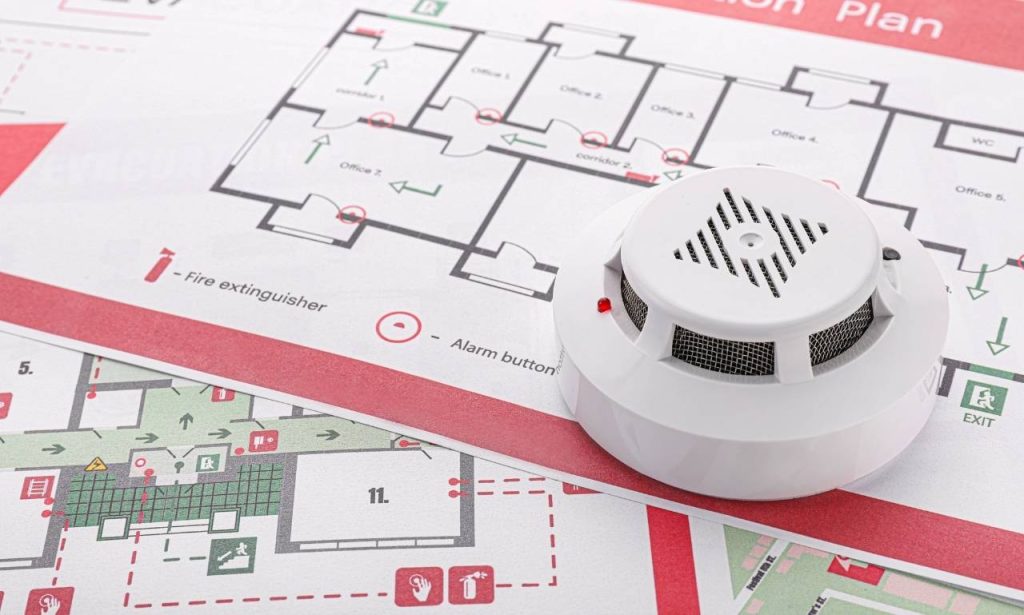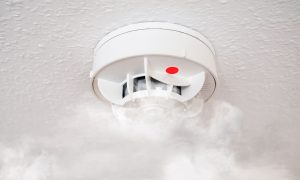Carbon monoxide remains one of the deadliest household threats. This colorless, odorless gas silently invades homes each year. Many families face serious health risks without proper detection systems. A single carbon monoxide detector can literally save lives. Your family deserves protection from this invisible danger lurking in everyday appliances. Safety experts recommend installing multiple detectors throughout your home. The placement of these devices matters significantly for maximum protection. Not every room needs a detector, but strategic positioning ensures comprehensive coverage. This article will guide you through the optimal locations for your CO detectors. We’ll also cover maintenance tips and the different types available today.
Where should you place CO detectors?

Proper placement of carbon monoxide detectors greatly impacts their effectiveness. Most manufacturers provide specific guidelines in their instruction manuals. These guidelines typically align with fire safety recommendations and building codes. You should install at least one detector on each level of your home. Additional units near sleeping areas offer extra protection during vulnerable hours. Distance from fuel-burning appliances matters when positioning your detectors. Keep them at least 15 feet away from these potential sources. This prevents false alarms while ensuring timely detection of dangerous levels. Height placement depends somewhat on the specific model you purchase. Some work best at eye level, while others function optimally near the ceiling. Check your device’s instructions for the manufacturer’s specific recommendations.
Living Room
The living room often contains multiple potential CO sources. Fireplaces, wood stoves, and gas heaters pose particular risks. Install a detector approximately five feet above the floor in this area. Wall mounting works well for most living room installations. Place the unit away from windows or doors to prevent interference. Air drafts can dilute carbon monoxide concentrations and delay detection. Keep detectors away from dusty areas that might clog sensors. Bookshelves or entertainment centers often provide good mounting locations. Make sure nothing obstructs the device’s air intake vents. Regular dusting helps maintain optimal sensor function in living spaces. Families spending significant time in these rooms benefit from prompt alerts. Your detector should be visible but not prominently displayed as decoration.
Kitchen
Kitchens contain numerous appliances that might produce carbon monoxide. Gas stoves, ovens, and water heaters all burn fuel during operation. However, placing detectors too close to these appliances invites false alarms. Position your kitchen detector at least 20 feet from cooking appliances. This distance prevents steam or cooking smoke from triggering unnecessary warnings. Mount the unit high on walls rather than directly on the ceiling. Carbon monoxide weighs slightly less than air and tends to rise. Avoid installing near windows, exhaust fans, or air vents. These areas experience air movement that might dilute gas concentrations. Keep detectors away from humid areas near sinks or dishwashers. Moisture can damage electronic components over time. Clean kitchen detectors more frequently due to grease buildup. Regular testing ensures these crucial devices function despite kitchen conditions.
Hallway
Hallways serve as central pathways connecting various rooms. These locations provide excellent coverage for multiple areas simultaneously. Place detectors in hallways outside bedroom areas for nighttime protection. This strategic placement allows alarms to reach sleeping family members quickly. Mount units approximately five feet from the floor for optimal detection. Avoid corners where air circulation might be limited or stagnant. Central positioning in longer hallways provides the most comprehensive coverage. Ensure nothing blocks the detector’s sensors or sound output. Hallway units should connect to others for whole-house alert capabilities. Interconnected systems warn everyone regardless of their location. Consider models with louder alarms for larger homes with extended hallways. Regular testing confirms these critical units remain functional year-round.
Bedroom
Bedrooms require special consideration for carbon monoxide protection. People spend roughly one-third of their lives sleeping in these spaces. Your reaction time decreases significantly during sleep without proper warning systems. Install detectors inside each bedroom for maximum safety assurance. Position units near beds but away from direct breathing zones. Some experts recommend ceiling installation for bedroom detectors. This placement prevents interference with furniture or decorative items. Choose models with louder alarms or vibration features for deep sleepers. Battery backup ensures protection during nighttime power outages. Consider combination smoke/CO detectors for comprehensive bedroom safety. These units save space while providing dual protection functions. Check bedroom detectors monthly to ensure proper functioning. Replace batteries immediately when low-power warnings appear.
Basement
Basements require special attention due to their unique characteristics. These areas often house furnaces, water heaters, and other fuel-burning equipment. Install detectors near stairways leading up from basement areas. This placement helps alerts reach other house sections quickly. Mount units on walls about five feet above the floor level. Keep detectors away from dusty, humid, or excessively cold spots. Utility rooms with heating equipment need separate monitoring. Unfinished basements should have detectors despite less frequent use. Check basement units more frequently for dust accumulation. Seasonal heating system activation warrants additional testing. Consider waterproof models in basements prone to dampness. Backup power sources prove especially important for basement installations. Regular maintenance ensures these often-forgotten detectors remain functional.
Do CO alarms operate differently from smoke alarms?
Carbon monoxide alarms function quite differently from standard smoke detectors. Smoke alarms identify particles in the air through optical or ionization technology. CO detectors specifically measure gas concentration levels over time. Most modern units employ electrochemical sensors for accurate readings. These sensors contain special gels that change electrical properties around carbon monoxide. The alarm triggers only when gas levels reach dangerous thresholds. This measured approach helps prevent unnecessary evacuations or panic. Response times vary based on concentration levels detected. Higher concentrations trigger faster alarm responses for immediate danger situations. Lower levels measured over hours might also activate the alarm system. Digital displays on advanced models show actual concentration readings. Voice alerts in premium units announce the specific detected hazard. Combination units contain separate sensing technologies for each threat type.
How do I take care of my CO alarm?
Regular maintenance ensures your carbon monoxide detectors function properly when needed. Testing should occur monthly by pressing the designated test button. Replace batteries at least twice yearly or whenever low-battery warnings sound. Many homeowners change batteries during daylight saving time adjustments. Clean units occasionally with compressed air to remove dust buildup. Never use cleaning chemicals directly on detector surfaces or sensors. Vacuum around detectors gently to remove cobwebs or debris. Replace units according to the manufacturer’s recommended schedule. Most carbon monoxide detectors last between five and seven years. Write the installation date on the back of each unit. Some newer models feature end-of-life warnings when replacement becomes necessary. Keep instruction manuals accessible for troubleshooting needs. Register products with manufacturers for recall or update notifications. Professional inspection adds an extra safety layer for complete peace of mind.
Why Are CO Alarms Important?
Carbon monoxide poses unique dangers due to its undetectable nature. The gas produces no odor, taste, or color to warn potential victims. Exposure symptoms often resemble common illnesses like flu or food poisoning. This similarity frequently leads to dangerous misdiagnosis and continued exposure. Even low levels cause headaches, dizziness, and fatigue over time. Higher concentrations can cause death within minutes without warning. Approximately 430 Americans die yearly from accidental carbon monoxide poisoning. Thousands more require emergency treatment for non-fatal exposure effects. Winter months see dramatic increases in poisoning incidents nationwide. Homes with fuel-burning appliances face significantly higher risk factors. Older heating systems present particularly dangerous exposure sources. Modern, airtight construction can trap gases inside living spaces. Proper detection provides the only reliable protection against this threat. The cost of quality detectors pales against potential medical expenses. One functioning alarm can literally mean the difference between life and death.
Types of carbon monoxide detectors

Several carbon monoxide detector types offer different features and benefits. Battery-powered units provide protection during power outages. These models work anywhere without requiring electrical outlets nearby. Plug-in detectors offer convenience without battery replacement concerns. Many include battery backup for continuous protection during outages. Hardwired systems integrate with existing home security or fire systems. These permanent installations typically feature interconnection capabilities. Digital display models show current and peak CO concentration levels. Voice alert systems announce specific hazards instead of generic alarms. Smart detectors connect to home automation systems and smartphones. These advanced units send remote notifications during triggered events. Combination CO/smoke detectors save space while providing dual protection. Biomimetic detectors use gel technology that changes color around carbon monoxide. Electrochemical sensors offer high accuracy and fewer false alarms. Each type suits different home situations and personal preferences.
Conclusion
Proper carbon monoxide detector placement significantly impacts your family’s safety. Strategic installation throughout your home creates a comprehensive protection network. Living rooms, kitchens, hallways, bedrooms, and basements all require specific consideration. Understanding the differences between smoke and CO alarms improves usage. Regular maintenance ensures these life-saving devices function properly when needed. The importance of these simple devices cannot be overstated given the dangers. Multiple detector types offer solutions for every home configuration and budget. Your family deserves protection from this invisible killer lurking in common appliances. Take time today to assess your current carbon monoxide detection system. Add units where needed and replace outdated models promptly. Small investments now prevent potentially devastating consequences later. Sleep soundly knowing you’ve taken proper precautions against this silent threat.
Also Read: Simple and Creative Scrap Wood Projects
FAQs
Install at least one detector on each floor, including the basement and near all sleeping areas.
Replace units every 5-7 years, following the manufacturer’s specific recommendations.
Yes, most battery-powered and plug-in models are designed for simple DIY installation.
Avoid bathrooms, direct sunlight, drafty areas, and locations within 15 feet of fuel-burning appliances.

